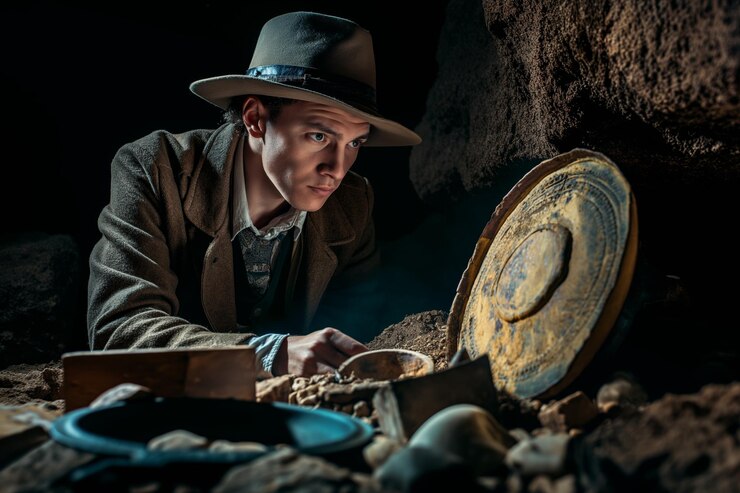
Veetėjas, a term rich in history and cultural significance, represents a unique facet of Lithuanian heritage. These traditional figures have played a pivotal role in shaping social, educational, and spiritual practices throughout centuries. Understanding the origins and evolution of Veetėjas offers a fascinating glimpse into the cultural fabric of Lithuania. This article delves into the historical roots, cultural importance, and modern relevance of Veetėjas, highlighting their enduring legacy and influence. Join us as we explore the story of Veetėjas and their journey through time, revealing their impact on both ancient traditions and contemporary society.
Historical Background
The origins of Veetėjas trace back to ancient Baltic tribes, where they held significant roles within the community. These figures, often regarded as guardians of wisdom and tradition, were integral to the social and spiritual fabric of early Lithuanian society. Veetėjas were known for their deep understanding of nature, spirituality, and the human condition, which they passed down through oral traditions and rituals.
Etymologically, the term “Veetėjas” is rooted in the ancient Baltic languages, reflecting the deep historical and cultural ties to the region. The word itself has evolved over time, but its core meaning remains associated with guidance, wisdom, and protection. These attributes were highly valued in early societies, where Veetėjas often served as advisors and spiritual leaders.
In historical contexts, Veetėjas were more than just cultural figures; they were pivotal in maintaining societal order and harmony. They were believed to possess special knowledge and abilities that connected them to the natural and spiritual worlds. This connection allowed them to perform rituals that ensured the well-being of their communities, from agricultural success to personal health.
During the pagan era, Veetėjas played a central role in rituals and ceremonies. They were seen as intermediaries between the human and divine realms, capable of invoking the blessings of deities and spirits. Their rituals were designed to align the community with the cycles of nature, ensuring prosperity and harmony. These practices were not only religious but also practical, reinforcing social cohesion and shared values.
The historical significance of Veetėjas continued to evolve with the advent of Christianity in Lithuania. While the new religion brought significant changes, many pagan traditions persisted, often blending with Christian practices. Veetėjas adapted to these changes, maintaining their roles as cultural custodians while integrating new religious elements into their practices. This adaptability highlights the resilience and enduring importance of Veetėjas in Lithuanian culture.
Throughout history, the roles and perceptions of Veetėjas have shifted, yet their core functions as guides, protectors, and keepers of wisdom have remained constant. Understanding the historical background of Veetėjas provides a deeper appreciation for their enduring legacy and the ways they have shaped and been shaped by Lithuanian culture.

Cultural and Social Roles
Veetėjas have long held an influential place in Lithuanian society, deeply embedded in the cultural and social fabric of the region. Their roles extend beyond mere folklore, touching various aspects of daily life, education, and community practices.
Role in Pagan Rituals and Ancient Lore
In ancient times, Veetėjas were pivotal figures in pagan rituals. They acted as mediators between the physical world and the spiritual realm, conducting ceremonies that honored nature and the gods. These rituals were essential for agricultural cycles, hunting success, and community well-being. Veetėjas were responsible for invoking blessings, interpreting omens, and ensuring harmony between the community and the natural world.
Their knowledge of herbal medicine, astronomy, and natural cycles was highly respected. Veetėjas used this knowledge to predict weather patterns, determine planting seasons, and guide the community through natural disasters. This role as keepers of practical and spiritual wisdom cemented their place in society.
Influence on Socialization and Education
Beyond their spiritual duties, Veetėjas played a significant role in socialization and education. They were often the storytellers, passing down myths, legends, and historical accounts through generations. These stories were not just entertainment but served as moral and ethical guides, teaching values such as bravery, honor, and respect for nature.
In educational contexts, Veetėjas were akin to teachers and mentors. They taught young members of the community about their heritage, customs, and the importance of communal harmony. Their teachings were practical, covering skills needed for daily life, and philosophical, imparting wisdom about the human condition and the natural world.
Guardians of Tradition and Social Order
Veetėjas were also guardians of tradition, ensuring that customs and cultural practices were preserved and respected. They maintained the continuity of cultural rituals, which reinforced social bonds and collective identity. This role was especially important during times of change or crisis, where adherence to tradition provided stability and a sense of continuity.
Their influence extended to dispute resolution and maintaining social order. Veetėjas often acted as mediators in conflicts, using their respected status to ensure fair and just outcomes. Their deep understanding of community dynamics and human behavior allowed them to address disputes with wisdom and authority.
Adapting to Change
As Lithuanian society evolved, so did the roles of Veetėjas. The advent of Christianity brought significant cultural shifts, yet many Veetėjas adapted by integrating Christian elements into their practices. This blending of traditions allowed them to remain relevant and respected figures within the community. Their ability to evolve while preserving core aspects of their role demonstrates their enduring importance.
Today, the legacy of Veetėjas continues in various forms. They remain symbols of cultural identity and historical continuity, representing the resilience and adaptability of Lithuanian traditions. Their influence on socialization, education, and community cohesion underscores their lasting significance in both historical and contemporary contexts.
The multifaceted roles of Veetėjas highlight their integral position within Lithuanian culture, acting as spiritual guides, educators, and custodians of tradition. Their contributions have shaped the social and cultural landscape, ensuring the preservation and transmission of vital knowledge and values across generations.
Evolution of Veetėjas
The concept and roles of Veetėjas have undergone significant changes throughout Lithuanian history. From their early origins in pagan rituals to their adaptation in Christian contexts, the evolution of Veetėjas reflects broader cultural and societal transformations.
Early Pagan Influence
In the early days, Veetėjas were deeply rooted in pagan traditions. They were seen as essential figures in various ceremonies and rituals, often acting as intermediaries between the human and spiritual worlds. Their influence was broad, encompassing agricultural practices, healing, and the interpretation of natural phenomena. This period solidified their status as wise and revered leaders within the community.
The Impact of Christianity
With the advent of Christianity in Lithuania during the 14th century, many pagan traditions, including those involving Veetėjas, faced significant challenges. However, rather than disappearing, the role of Veetėjas adapted to the new religious landscape. Many aspects of their rituals and knowledge were integrated into Christian practices. For instance, the celebration of certain saints’ days incorporated elements of traditional pagan festivals led by Veetėjas.
This blending of beliefs allowed Veetėjas to maintain their relevance. They continued to perform their roles, albeit within a new religious framework. Their ability to adapt highlights their importance in preserving cultural continuity amid significant societal changes.
Renaissance and Enlightenment Periods
The Renaissance and Enlightenment periods brought new intellectual and cultural movements to Lithuania. During these times, the role of Veetėjas expanded beyond purely spiritual and ritualistic functions. They became more involved in the cultural and educational development of society. The emphasis on knowledge and learning during the Enlightenment resonated with the traditional roles of Veetėjas as keepers of wisdom and educators.
In literature and art, Veetėjas were often depicted as noble and wise figures, embodying the ideal of enlightened leadership. This period also saw the documentation and preservation of many oral traditions and stories associated with Veetėjas, ensuring that their legacy would endure in written form.
Modern Adaptations
In contemporary times, the role of Veetėjas continues to evolve. While their traditional functions may not be as prominent, the cultural and symbolic significance of Veetėjas remains strong. They are celebrated in festivals, literature, and art, symbolizing Lithuanian heritage and identity.
Modern Veetėjas are often seen as cultural ambassadors, promoting Lithuanian traditions and values in a globalized world. They engage in cultural preservation efforts, such as teaching traditional crafts, storytelling, and participating in cultural events. This modern incarnation of Veetėjas reflects their enduring adaptability and relevance.
Technological and Social Changes
The 20th and 21st centuries have introduced new challenges and opportunities for the role of Veetėjas. Technology has transformed how cultural knowledge is shared and preserved. Digital archives and online platforms allow for the wider dissemination of stories, rituals, and practices associated with Veetėjas. Social media and digital storytelling have also become new avenues for sharing the wisdom and traditions of Veetėjas with a broader audience.
Additionally, contemporary social changes, such as increased interest in sustainable living and holistic wellness, have brought renewed attention to the traditional knowledge held by Veetėjas. Their deep understanding of natural cycles, herbal medicine, and communal living resonates with modern movements seeking a return to more sustainable and meaningful ways of life.
The evolution of Veetėjas from ancient pagan rituals to their place in modern society underscores their resilience and enduring significance. Their ability to adapt to changing cultural and social landscapes ensures that the wisdom and traditions they embody continue to be a vital part of Lithuanian heritage.
Characteristics and Craftsmanship
Veetėjas are distinguished by their unique characteristics and the meticulous craftsmanship involved in their creation. These elements highlight their cultural significance and the skills required to maintain their traditional integrity.

Defining Features and Types
Veetėjas come in various forms, each with distinct features that reflect their specific roles and symbolic meanings. Traditionally, they are depicted as wise figures, often with attributes that signify their connection to nature and the spiritual world. These attributes might include specific clothing, tools, or symbols that denote their status and functions.
There are different types of Veetėjas, each serving various purposes within the community. Some are primarily healers, known for their knowledge of herbal medicine and natural remedies. Others are spiritual guides, conducting rituals and offering counsel. Additionally, there are Veetėjas who focus on storytelling and preserving oral traditions, acting as cultural historians and educators.
Materials and Techniques
The craftsmanship behind Veetėjas involves the use of traditional materials and techniques passed down through generations. These materials are often sourced from nature, reflecting the deep connection between Veetėjas and the environment. Common materials include wood, stone, and natural fibers, each chosen for its symbolic and practical qualities.
Creating a Veetėjas figure or artifact requires a high level of skill and knowledge. Artisans employ various traditional methods, such as carving, weaving, and embroidery, to produce items that are both functional and symbolic. The process is often ritualistic, with specific steps and practices that honor the traditions and beliefs associated with Veetėjas.
Symbolism and Cultural Significance
The symbolism embedded in the craftsmanship of Veetėjas is rich and multifaceted. Each element, from the choice of materials to the design details, carries meaning. For instance, specific patterns in embroidery or carvings might represent natural cycles, spiritual concepts, or historical events. These symbols serve to connect the present with the past, reinforcing cultural continuity.
The craftsmanship of Veetėjas also plays a role in community identity. Creating and maintaining these traditional artifacts fosters a sense of pride and belonging. It allows individuals to connect with their heritage and contribute to the preservation of their cultural legacy.
Techniques and Methods
The methods used in crafting Veetėjas vary depending on the type of artifact and its intended purpose. Carving, for example, is a common technique used to create wooden figures and symbols. This process requires precise skill and an understanding of the wood’s properties. Artisans often spend years mastering these techniques, learning from mentors and through hands-on experience.
Weaving and embroidery are other critical techniques, especially in the creation of traditional clothing and ceremonial items. These practices involve intricate patterns and designs, each with specific meanings. The process of creating these items is time-consuming and requires significant attention to detail, reflecting the dedication and respect for tradition.
Preservation of Skills
The skills required to craft Veetėjas are typically passed down through generations within families or communities. Apprenticeship models, where younger members learn from experienced artisans, are common. This method of knowledge transfer helps preserve the techniques and ensures that the cultural significance of Veetėjas is maintained.
In modern times, efforts to document and teach these traditional skills have increased. Workshops, cultural programs, and educational initiatives aim to keep the art of Veetėjas craftsmanship alive. These efforts not only preserve the physical artifacts but also the intangible cultural heritage they represent.
Contemporary Interpretations
While traditional methods and materials remain central, contemporary artisans also explore new interpretations of Veetėjas. These modern adaptations might incorporate innovative materials or blend traditional designs with contemporary aesthetics. Such approaches help keep the tradition relevant and accessible to younger generations, ensuring its continued evolution and significance.
The characteristics and craftsmanship of Veetėjas reflect a deep connection to cultural heritage and the natural world. Through meticulous techniques and symbolic designs, these artifacts embody the wisdom, values, and traditions of Lithuanian society. Preserving these skills and their cultural significance is essential for maintaining the rich legacy of Veetėjas for future generations.
Symbolism and Representation
Veetėjas are deeply rooted in Lithuanian culture, embodying a rich tapestry of symbolism and representation. They are more than just cultural icons; they are powerful symbols that carry significant meanings and convey various aspects of the human experience and the natural world.
Themes and Motifs
Veetėjas narratives are infused with recurring themes and motifs that reflect the values and beliefs of Lithuanian society. Common themes include the struggle between good and evil, the importance of wisdom and knowledge, and the connection between humanity and nature. These themes are not only central to the stories themselves but also serve to impart moral lessons and cultural values.
Motifs such as animals, plants, and natural elements frequently appear in Veetėjas stories, each carrying specific symbolic meanings. For example, animals often represent certain traits or qualities, such as bravery, cunning, or loyalty. Natural elements like forests, rivers, and mountains are symbolic of life, growth, and the mysteries of the world.
Symbolic Roles in Rituals
In rituals, Veetėjas play symbolic roles that are essential for the community’s spiritual and social well-being. They act as intermediaries between the physical and spiritual worlds, guiding ceremonies that honor deities, ancestors, and natural forces. These rituals are designed to ensure harmony, prosperity, and protection for the community.
The symbolism in these rituals often involves the use of specific objects, gestures, and chants that have been passed down through generations. Each element has a particular meaning and purpose, contributing to the overall effectiveness of the ritual. For instance, the use of water might symbolize purification, while fire represents transformation and renewal.
Representation in Art and Literature
Veetėjas have a prominent place in Lithuanian art and literature, where they are depicted in various forms and styles. In visual art, they are often portrayed with distinctive features that highlight their wisdom, strength, and connection to nature. These representations serve to reinforce their symbolic roles and make their stories accessible to a wider audience.
In literature, Veetėjas appear in myths, legends, and folklore, often as central characters who embody the values and ideals of the culture. These stories are rich with symbolic language and imagery, using the adventures and experiences of Veetėjas to explore complex themes and convey important messages. The narratives are not just entertainment but also a means of preserving and transmitting cultural knowledge.
Dual Nature of Veetėjas
One of the intriguing aspects of Veetėjas is their dual nature, often depicted as both protectors and challengers. This duality reflects the complexities of life and the human condition, acknowledging that wisdom and growth often come through facing difficulties and overcoming obstacles. Veetėjas can be seen as guides who provide support and knowledge but also as figures who test and challenge individuals to grow and learn.
This dual nature is also symbolic of the balance between different forces in the world, such as light and dark, order and chaos, and life and death. Veetėjas embody this balance, demonstrating that both aspects are necessary for harmony and wholeness.
Connection to Nature
The connection between Veetėjas and nature is a central element of their symbolism. They are often depicted in natural settings, interacting with animals, plants, and natural forces. This connection underscores the importance of living in harmony with the natural world and recognizing the interdependence of all life forms.
In rituals and stories, Veetėjas use their knowledge of nature to heal, protect, and guide their communities. This relationship with the natural world highlights the reverence for nature in Lithuanian culture and the belief in its power and wisdom.
Modern Interpretations
In contemporary interpretations, the symbolism of Veetėjas continues to evolve. They are often used to address modern issues such as environmental sustainability, social justice, and cultural identity. By drawing on traditional symbolism, contemporary artists and writers can create new narratives that resonate with current concerns while staying connected to cultural roots.
Modern representations may incorporate new elements and perspectives, blending traditional symbolism with contemporary themes. This ongoing evolution ensures that the symbolism of Veetėjas remains relevant and meaningful in today’s world.
Veetėjas are rich with symbolism and representation, serving as powerful cultural icons that convey important values, beliefs, and lessons. Through their themes, roles in rituals, artistic depictions, and dual nature, they offer a deep and multifaceted understanding of Lithuanian culture and the human experience. Their enduring presence in art, literature, and contemporary discourse highlights their timeless significance and the ongoing relevance of their symbolic meanings.
Modern Context and Applications
Veetėjas, deeply rooted in Lithuanian history and culture, continue to hold significance in contemporary society. Their relevance today spans various domains, reflecting both a preservation of tradition and an adaptation to modern needs and interests.

Contemporary Relevance
In today’s world, Veetėjas serve as cultural touchstones that connect the present with the past. They symbolize enduring values such as wisdom, community, and harmony with nature. This connection to tradition provides a sense of identity and continuity in a rapidly changing world. The stories and symbols of Veetėjas are celebrated in festivals, educational programs, and cultural events, ensuring that they remain a vibrant part of Lithuanian life.
Revival of Interest in Folklore
There has been a resurgence of interest in folklore and traditional practices, driven by a desire to reconnect with cultural roots and heritage. This revival has brought Veetėjas into the spotlight, with renewed efforts to document and share their stories and practices. Folklore festivals, academic research, and public exhibitions all contribute to a greater appreciation and understanding of Veetėjas.
This renewed interest is not limited to Lithuania. Global movements towards cultural preservation and appreciation of indigenous knowledge systems have also embraced the wisdom embodied by Veetėjas. They are featured in international folklore conferences, cross-cultural exchange programs, and global media, showcasing their universal appeal.
Educational Applications
Veetėjas play a significant role in education, both as subjects of study and as pedagogical tools. They are incorporated into school curricula to teach students about Lithuanian history, culture, and values. Through storytelling, students learn about moral lessons, social norms, and the importance of community.
Educational programs also use Veetėjas to engage students in creative and critical thinking. By analyzing stories and symbols, students develop skills in interpretation, narrative construction, and cultural analysis. These programs often include hands-on activities such as crafting traditional items, reenacting rituals, and exploring natural environments, making the learning experience immersive and interactive.
Therapeutic Uses
The symbolic and narrative elements of Veetėjas are also employed in therapeutic settings. Storytelling and myth have long been recognized for their healing potential, offering individuals ways to process experiences, emotions, and identities. Therapists use the stories of Veetėjas to help clients explore personal challenges and find meaning in their lives.
The themes of resilience, transformation, and harmony with nature found in Veetėjas narratives are particularly relevant in therapeutic contexts. They provide metaphors and frameworks for understanding personal growth and overcoming adversity. This therapeutic application underscores the timeless wisdom of Veetėjas and their capacity to offer guidance and support across different contexts.
Cultural Preservation
Efforts to preserve and promote the cultural heritage of Veetėjas are ongoing. These efforts include documenting oral traditions, restoring traditional artifacts, and promoting traditional crafts. Cultural organizations and government bodies work together to safeguard this heritage, recognizing its importance for national identity and cultural diversity.
Community-led initiatives also play a crucial role in preservation. Local groups organize workshops, storytelling sessions, and cultural festivals that celebrate Veetėjas. These grassroots activities ensure that the knowledge and practices associated with Veetėjas are passed down to future generations.
Digital Platforms and Media
In the digital age, Veetėjas have found new platforms for expression and dissemination. Social media, blogs, and online forums provide spaces for sharing stories, discussing cultural practices, and connecting with a broader audience. Digital storytelling projects use multimedia tools to bring Veetėjas narratives to life, reaching younger generations and global audiences.
Documentaries, films, and animated series inspired by Veetėjas also contribute to their modern relevance. These media representations introduce Veetėjas to new audiences, highlighting their cultural significance and contemporary applications. By leveraging digital technology, the rich heritage of Veetėjas is made accessible and engaging for a diverse and interconnected world.
Veetėjas continue to be a vital part of Lithuanian culture, adapting to modern contexts while preserving their traditional essence. Their roles in education, therapy, cultural preservation, and digital media demonstrate their enduring relevance and versatility. By bridging the past and present, Veetėjas offer valuable insights and inspiration for contemporary society.
Conclusion
Veetėjas stand as enduring symbols of Lithuanian heritage, embodying a rich tapestry of history, culture, and wisdom. From their ancient roots in pagan rituals to their modern-day significance, they have adapted and thrived, reflecting the resilience and continuity of Lithuanian traditions. Through their roles in education, therapy, and cultural preservation, Veetėjas continue to offer valuable insights and inspiration, connecting the past with the present. Their stories, symbols, and practices remain a vital part of Lithuanian identity, showcasing the timeless relevance of these cultural icons. As we honor and preserve the legacy of Veetėjas, we celebrate the profound depth and beauty of Lithuanian culture, ensuring its transmission to future generations.
Frequently Asked Questions
1. What is the historical significance of Veetėjas in Lithuanian culture?
Veetėjas have played an essential role in Lithuanian culture for centuries, serving as spiritual guides, educators, and custodians of tradition. They were central to pagan rituals and later adapted to Christian practices, maintaining their influence as symbols of wisdom and cultural heritage.
2. How have Veetėjas evolved over time?
Veetėjas have evolved from their early roles in pagan rituals to become integral parts of Lithuanian cultural identity. They have adapted to changes brought by Christianity, the Renaissance, and modern times, continually preserving their core functions while integrating new elements.
3. What are the main characteristics and craftsmanship involved in creating Veetėjas?
The creation of Veetėjas involves traditional materials such as wood, stone, and natural fibers. Artisans use various techniques like carving, weaving, and embroidery to produce items that are both functional and symbolic. Each element in the design carries specific cultural meanings and reflects the deep connection to nature.
4. How are Veetėjas relevant in contemporary society?
Veetėjas remain relevant today through their roles in education, therapy, and cultural preservation. They are celebrated in festivals, used in educational curricula, and employed in therapeutic settings to explore personal growth and cultural identity. Modern media also highlight Veetėjas, introducing them to new audiences.
5. What efforts are being made to preserve the tradition of Veetėjas?
Efforts to preserve Veetėjas include documenting oral traditions, restoring traditional artifacts, and promoting traditional crafts. Cultural organizations and community-led initiatives organize workshops, storytelling sessions, and cultural festivals to keep the knowledge and practices associated with Veetėjas alive for future generations.









